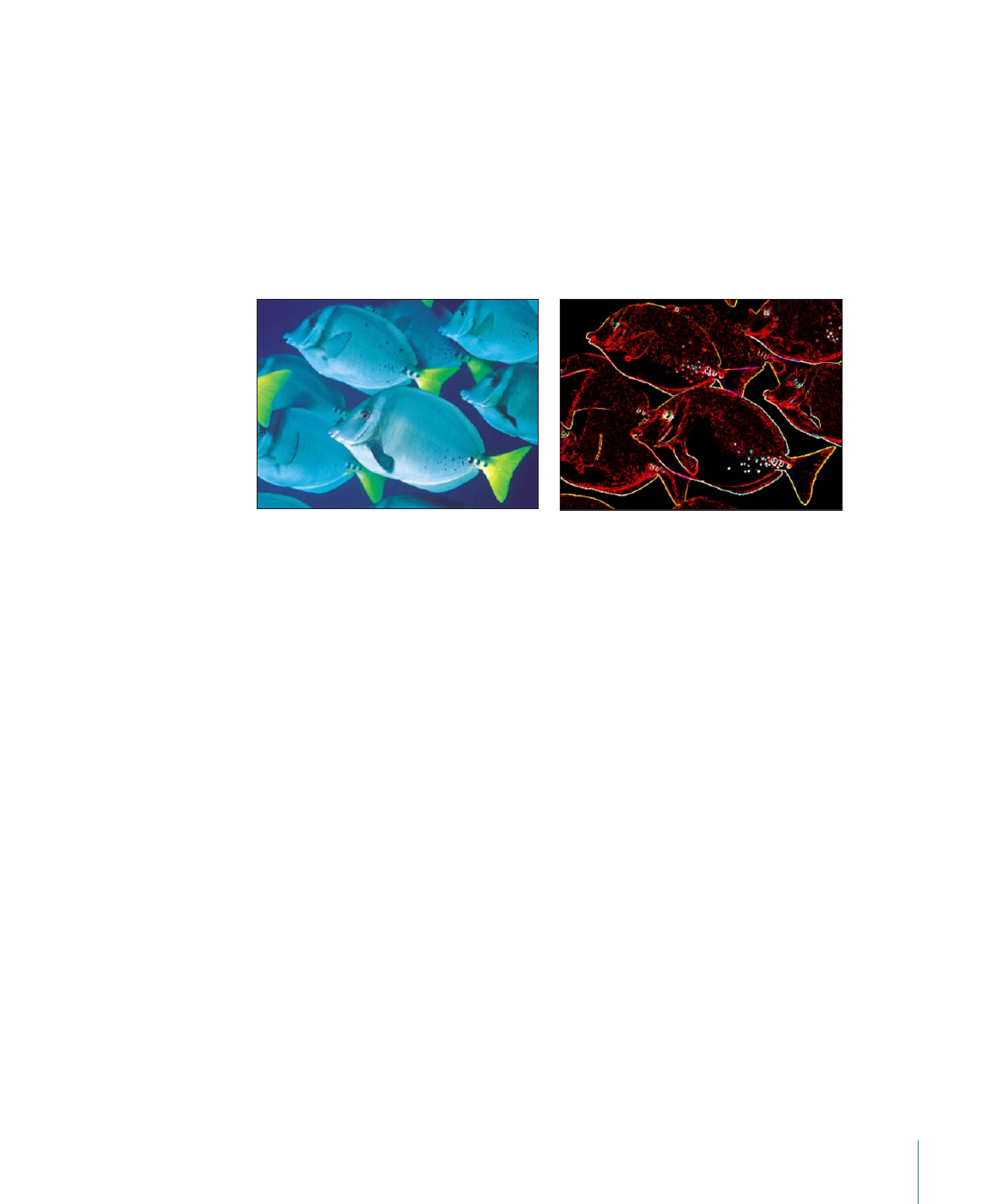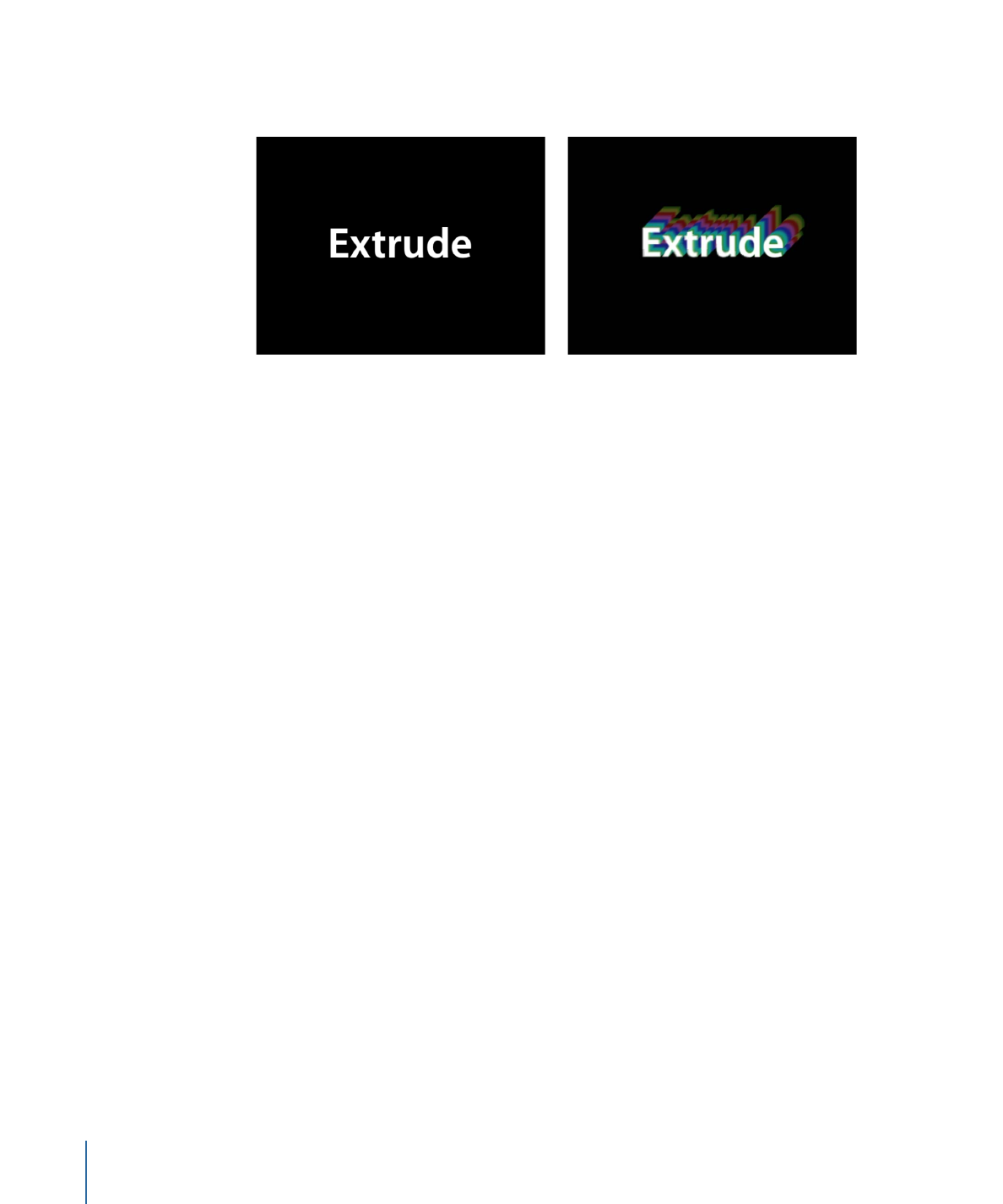
Extrude
Gives an object simulated depth, by creating a front and back side, and then offsetting
them and extruding the edges so they connect.
Note: Because this filter only simulates depth, an object with the Extrude filter applied
does not interact with 3D aspects of Motion.
1081
Chapter 19
Using Filters

This filter causes rasterization in 3D groups. For more information on rasterization, see
About Rasterization
.
Original image
Extrude applied
Parameters in the Inspector
Angle:
Sets the angle at which the object is extruded. Drag the onscreen control to adjust
its value in the Canvas.
Distance:
Sets the distance the object is extruded. Drag the onscreen control to adjust
its value in the Canvas.
Clipping:
Sets the distance at which the extrusion is clipped.
Back Size:
Sets the size of the back object, as a proportion of its original size.
Face Brightness:
Sets a brightness level applied to the face of the object.
Front Brightness:
Sets a brightness level applied to the front of the object.
Back Brightness:
Sets a brightness level applied to the back of the object.
Extrude Style:
Selects the method used to extrude the sides of the object. Shading or
Gradient can be selected. With Shading selected, the color values of the pixels at the
edges of the object are used along the extrusion. With Gradient selected, a gradient preset
or custom gradient can be used.
Gradient:
Selects a gradient preset to be applied to the object. Can also be used to edit
a custom gradient. The gradient is applied only if the Extrude Style is set to Gradient.
Mix:
Sets the percentage of the original image to be blended with the filtered image.
Publish OSC:
Publishes the filter’s onscreen controls in Final Cut Pro X. For more
information on creating content for use in Final Cut Pro, see
Creating Templates for
Final Cut Pro X
.
HUD Controls
The HUD contains the following controls: Angle, Distance, Clipping, Back Size, Face
Brightness, Front Brightness, Back Brightness, Extrude Style, and Gradient.
1082
Chapter 19
Using Filters